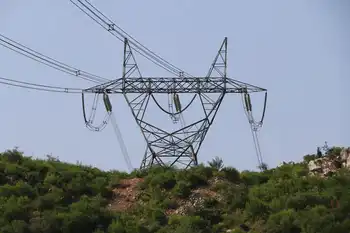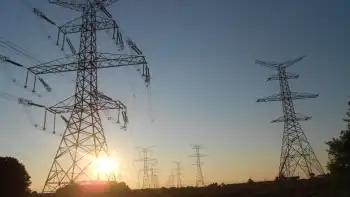Ontario Premiere looking for energy shoppers
By The Canadian Press
CSA Z462 Arc Flash Training - Electrical Safety Essentials
Our customized live online or in‑person group training can be delivered to your staff at your location.

- Live Online
- 6 hours Instructor-led
- Group Training Available
Although his only public speech will be to the Calgary Chamber of Commerce, where he'll promote the idea of a national securities regulator, the topic of electricity is likely to come up. Ontario is shopping for new power generation and Calgary is home to most of Canada's major non-regulated power companies.
"We are, and have been, encouraged in the direction that the new premier's government is taking on energy issues," said TransAlta Corp. spokesman Tim Richter.
"They seem to be working very quickly and working to a plan, so we're very interested to see how things turn out."
TransAlta has invested about $750 million in four plants in Ontario that generate 840 megawatts of electricity. Company president Steve Snyder will be among several attending a private function Thursday night with McGuinty.
Last month, Ontario announced it was seeking up to 2,500 new megawatts of power within four years to help meet McGuinty's election commitment to replace coal-fired plants in southern Ontario.
Due to the planned closing of the coal-burning Lakeview Generating Station west of Toronto in 2005, the province's Independent Electricity Market Operator has warned that the city could face a significant short-term electricity shortage between 2005 and 2007.
Ontario has also said it is seeking for up to 300 megawatts of renewable energy capacity to help meet its target of getting five per cent of power from "green" sources.
TransAlta owns several large wind farms in southern Alberta and is keen to enter the Ontario marketplace.
"Our basic criterion is a long-term contract," said Richter. "And that gives us the security we would need to invest."
Another Calgary-based energy company of interest to Ontario is TransCanada Corp., which owns a handful of power plants across North America, including a 32 per cent stake in Bruce Power, which operates a nuclear generating plant on the shores of Lake Huron.
Recently, Bruce Power announced plans to study the feasibility of restarting at least two old reactors at the station - Bruce A units 1 and 2 - and refurbishing four Bruce B reactors.
The feasibility study will involve a technical inspection of the two laid-up Bruce A units and an assessment of how much it would cost to upgrade them to current standards.
It will also look at what improvements are needed to extend the operating life of Bruce B as well as the feasibility of installing one or more of the advanced Candu reactors that are being developed.
Other Alberta-based companies that own power generation facilities and have business interests in Ontario include Calgary-based Atco Group as well as Epcor, owned by the city of Edmonton.











